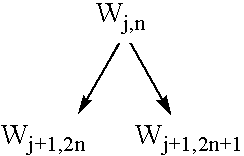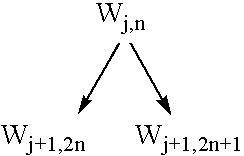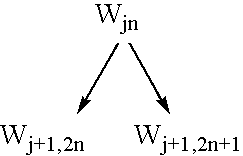Algorithmic design of peptides for binding and/or modulation of the functions of receptors and/or other proteins
a technology of receptors and proteins, applied in the field of peptide molecules, can solve the problems of most of the information found in secondary eigenfunctions being lost, and achieve the effects of increasing the resistance of a conformed peptide, increasing the length of action, and improving the therapeutic effect and usefulness
- Summary
- Abstract
- Description
- Claims
- Application Information
AI Technical Summary
Benefits of technology
Problems solved by technology
Method used
Image
Examples
example 1
Targeting the Human Long Form, D2 Dopamine Receptor
[0129] The 443-amino acid long isoform of the human dopamine D2 (D2DA) receptor was transformed into a real numbered ΔGhp series, Hi, using the Eyring-Tanford hydrophobicity scale. This Hi series (and its all poles maximum entropy power spectral transformation, S(ω), see below) demonstrated a multimodal distribution (FIG. 2A). In place of the a priori selection of orthonormal transformations such as Fourier or Bessel functions with which to decompose the receptor's Hi, i=1, . . . 443, orthogonal functions were generated from the receptor's Hi directly using the Broomhead-King (“B-K”) decomposition derivative of methods often named after Karhuenen and Loeve (“K-L”). A K-L decomposition of the Hi series of the D2DA receptor involves the autocorrelation matrix, Aij, of the entire Hi, i=1 . . . 443 series, yielding an eigenvector template for D2DA targeted peptides as long as the receptor itself. In the B-K procedure, the Hi sequences ...
example 2
Other Membrane Protein Receptor-Targeted Peptide Derivations
[0140] Peptides derived from receptor protein systems other than the D2DA receptor were also tested for their effects on their respective receptors. For the human muscarinic M1 receptor, CHO cells were transfected with the muscarinic M1 receptor cDNA derived from a human cDNA library essentially as described by Buckley et al. (Mol. Pharmacol. 1989 35:469-476). Briefly, the coding region of the M1 receptor was obtained from a human cDNA library and cloned into the expression vector pcDNA3 (Invitrogen, San Diego, Calif.). CHO-K1 cells were transformed with the construct, using the calcium phosphate method. Stably expressing transformants were obtained in the presence of 250 μg / ml geneticin. Transformed cell lines expressing the human NGF receptor also were obtained. The effects of the peptides derived by the methods of the present invention on the activities of the corresponding receptors in the transformed cell lines were e...
example 3
Calcitonin-Mimetic, Hydrophobic Eigenmode Conserving Retro-Inverso Peptides
[0146] Using the redundant subsequence template method described above, peptides were derived from the known polypeptide calcitonin. The parent family of known calcitonins are 31 amino acids in length, which was reduced to 10 amino acids using the redundant subsequence template method to produce the peptides listed in Table 7. The redundant subsequences were generated by examination of the calcitonin sequences of eight different species (Table. 6).
TABLE 6NonoverlappingFour-number Hydrophobic Free EnergyRepeatedSpeciesCodesSubsequencesHuman31131133311411241342144112413124112413; 311Swine31131133312442131142241131414211131; 421Cow31131133312443231142241131414211131; 142Sheep31131133312443231142241131414211131; 142Rat31131133311411231342144111413121141; 3112Eel31131133313311232331144212312113311; 311Salmon31131133313311232331144211111113311; 311; 111
[0147] Conventionally, calcitonin is administered by daily i...
PUM
| Property | Measurement | Unit |
|---|---|---|
| bonding angles | aaaaa | aaaaa |
| linear distance | aaaaa | aaaaa |
| linear distance | aaaaa | aaaaa |
Abstract
Description
Claims
Application Information
 Login to View More
Login to View More - R&D
- Intellectual Property
- Life Sciences
- Materials
- Tech Scout
- Unparalleled Data Quality
- Higher Quality Content
- 60% Fewer Hallucinations
Browse by: Latest US Patents, China's latest patents, Technical Efficacy Thesaurus, Application Domain, Technology Topic, Popular Technical Reports.
© 2025 PatSnap. All rights reserved.Legal|Privacy policy|Modern Slavery Act Transparency Statement|Sitemap|About US| Contact US: help@patsnap.com



